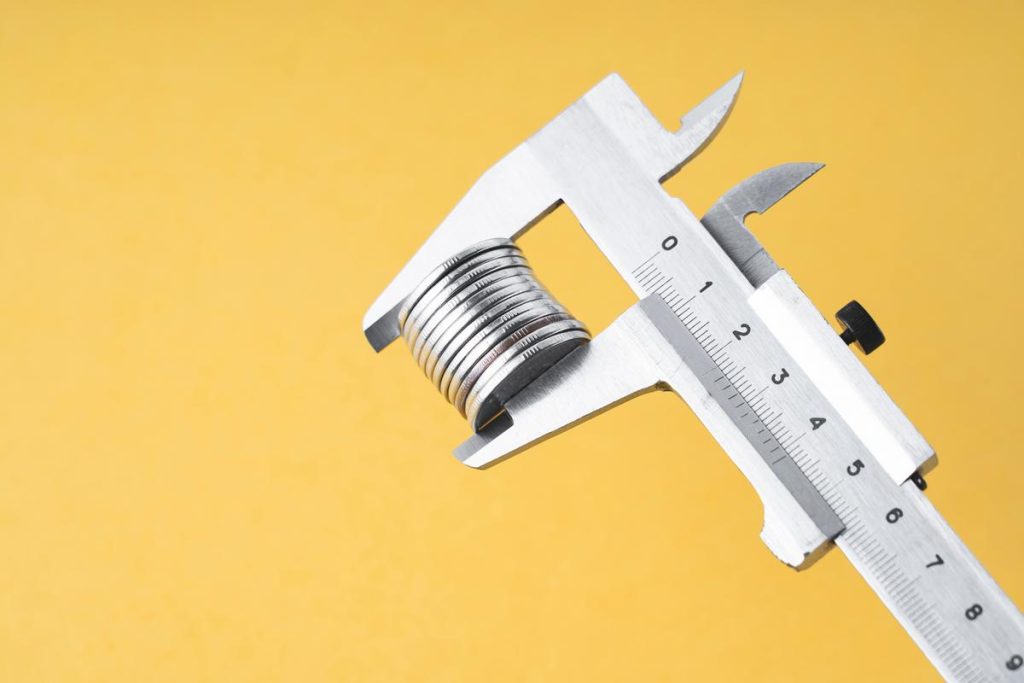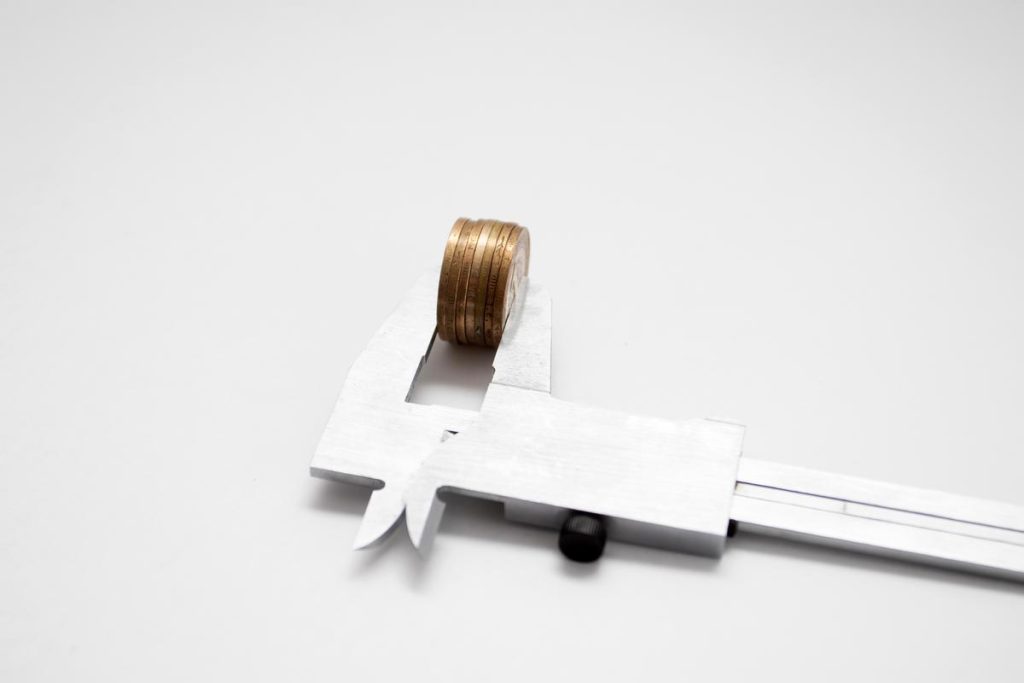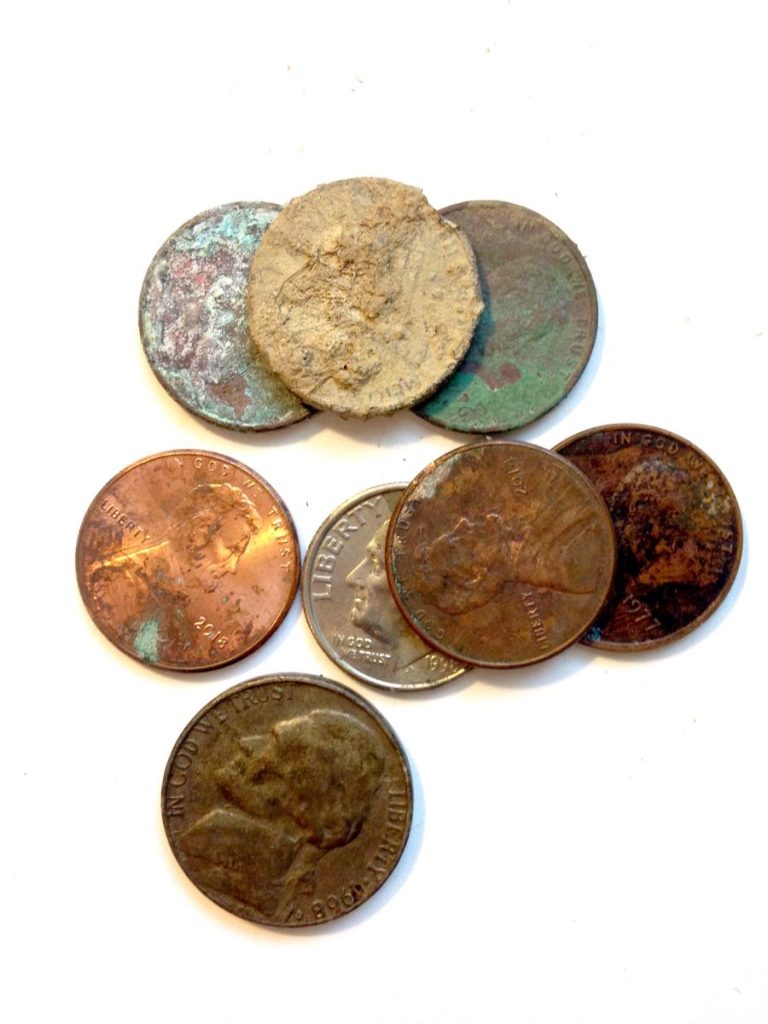To measure the thickness of a coin, close the caliper jaws around the coin’s edge, ensuring they are perpendicular to the surface. The digital caliper will display the thickness reading.
For thousands of years, coins have been a part of human civilization, serving as an exchange medium, a symbol of authority, and a valuable collectible for numismatists. Whether you’re a collector, a hobbyist, or just curious about coins, knowing how to measure their thickness accurately can help you get a better picture of them. Various methods and technologies are used to measure coin thickness in this article.
The Thickness of Standard Coins
| Coin Denomination | Diameter (mm) | Diameter (inches) | Thickness (mm) | Thickness (inches) |
|---|---|---|---|---|
| Penny (1 cent) | 19.05 mm | 0.75 inches | 1.52 mm | 0.0598 inches |
| Nickel (5 cents) | 21.21 mm | 0.835 inches | 1.95 mm | 0.076 inches |
| Dime (10 cents) | 17.91 mm | 0.705 inches | 1.35 mm | 0.053 inches |
| Quarter (25 cents) | 24.26 mm | 0.955 inches | 1.75 mm | 0.0689 inches |
| Half Dollar (50 cents) | 30.61 mm | 1.205 inches | 2.15 mm | 0.0846 inches |
| Dollar (1 dollar) | 26.49 mm | 1.043 inches | 2.0 mm | 0.079 inches |
Suggested Article: How Much Is a Pound of Pennies Worth?
Measuring the Thickness of a Coin

Calipers: The Precision Instrument
In numismatics, calipers are widely used to measure coin thickness because they’re easy to use and accurate. Digital calipers have an electronic display that shows the thickness reading, whereas manual ones use a scale. When measuring a coin’s thickness with calipers, make sure they’re perpendicular to the surface and gently close the jaws around the edge. You can get a precise measurement with the sliding arm.
Optical Micrometers: Uncovering Subtle Details
There are many industries that use optical micrometers, including numismatics, optical comparators, and shadowgraph micrometers. The method works by projecting a magnified shadow of a coin onto a calibrated glass screen. By measuring how long the shadow is, you can figure out how thick the coin is. The optical micrometer is perfect for measuring coins with intricate designs or irregular shapes.
Ultrasonic Testing: A Non-Destructive Approach
In ultrasonic testing, high-frequency sound waves are sent through the coin, and then reflected waves are analyzed to figure out their thickness. It’s a non-destructive method. Using ultrasonic testing, you can find hidden internal defects and check the uniformity of a coin’s thickness without damaging it.
Laser Profilometry: 3D Scanning for Accurate Data
An advanced technique called laser profilometry uses laser light to make a 3D profile of an object’s surface. Laser scanners are used to measure coin thickness, capturing the detail of the coin’s surface. The thickness of the coin can be accurately determined by analyzing laser data, including height variations. An important use of laser profilometry is determining the thickness distribution of irregular coins or ancient coins.
Factors Affecting Coin Thickness

The thickness of a coin can be influenced by various factors, each of which plays a significant role in determining the coin’s physical characteristics and overall value. Some of the key factors affecting coin thickness include:
Metal Composition and Density:
A coin’s thickness is directly affected by the type of metal it’s made of. Different metals have different densities, so coins made of denser materials will generally be thicker. A copper or nickel alloy coin, for example, is typically thinner than a silver or gold coin. In order to achieve the desired weight, diameter, and thickness of the coin, the metal composition is crucial.
Wear and Tear on Coin Surfaces:
Over time, coins’ surfaces wear down, reducing their thickness as they circulate in commerce. Friction, abrasion, and erosion wear down coins as they circulate. A coin’s wear and tear depends on how often it’s used and what it gets in circulation. A coin’s condition is based on how much wear it has on its surface, since heavily worn coins may not be as thick as uncirculated ones.
Minting Variations and Tolerances:
The minting process involves pressing the design onto metal blanks with dies. Variations in pressure or alignment can make an individual coin’s thickness slightly different. Tolerances on minting machines mean they’re okay with a small difference in coin thickness. It’s possible for coins of the same denomination and minting year to be a little different in thickness because of these variations and tolerances.
Do Coins Wear Out?
Over time, coins can wear out from repeated handling and circulation. It’s a natural consequence that coins wear out from being used as currency. As coins pass through numerous hands and are subjected to friction against surfaces, the metal surfaces slowly erode.
A coin’s wear depends on a lot of things, like its metal composition, circulation frequency, the conditions it encounters while it’s being used, and how people handle it. Compared to coins made from hard metals like silver or gold, coins made from softer metals like copper, nickel, and aluminum are more prone to wear.
There are various signs of wear on a coin, including smoothness, rounding of the edges, and a reduction in thickness. The more a coin is used, the more likely it is to show wear and a reduction in its original weight.
Often, when grading the condition of a coin, collectors, and numismatists consider wear. The Sheldon coin grading scale, for example, includes specific categories that describe the degree of wear, ranging from “Uncirculated” for new coins with no wear to “Poor” for heavily worn and barely recognizable coins.
How to clean a Gunky Coin?

You should be very careful when cleaning coins, especially valuable ones or collectibles, because improper cleaning can damage them and ruin them. It’s best not to clean valuable coins unless you’re a numismatist or have plenty of coin conservation experience. Here’s what you need to do if your coin has a lot of gunk or dirt:
Determine the Coin’s Value: Assess your coin’s value and rarity before cleaning it. You shouldn’t clean valuable or historically significant coins.
Wash Your Hands: Remove any oils or contaminants from your hands before handling the coin.
Gently Rinse with Water: It’s okay to rinse a coin with lukewarm water to remove loose dirt and debris if it’s not valuable or historically significant. Use a soft stream and don’t scrub it.
Soak in Distilled Water: If you’ve got really stubborn gunk, soak the coin in distilled water for a little while. Distilled water doesn’t contain minerals that can damage coins.
Use a Soft Brush: To remove the remaining gunk from your coin, you can use a soft-bristled toothbrush or a specialized coin cleaning brush. Be careful not to scratch it.
Avoid Harsh Chemicals: You shouldn’t use harsh chemicals, solvents, or abrasive cleaning products on the coin.
Pat Dry with Soft Cloth: Use a soft, lint-free cloth to dry the coin after cleaning. Don’t rub too hard or the surface will get scratched.
Allow to Air Dry: Make sure the coin is completely dry before storing it.
FAQs
Which measurement is best to measure the thickness of a coin?
The best measurement to measure the thickness of a coin is using a digital caliper or micrometer.
How do you measure the diameter and thickness of a coin?
To measure the diameter of a coin, place it on a flat surface and use calipers to measure the distance from one side to the opposite side through the center.
What method do you use to measure thickness?
To measure the thickness of a coin, close the caliper jaws around the coin’s edge, ensuring they are perpendicular to the surface. The digital caliper will display the thickness reading.
How do you measure a coin?
Use a digital caliper or micrometer to measure a coin’s thickness accurately.